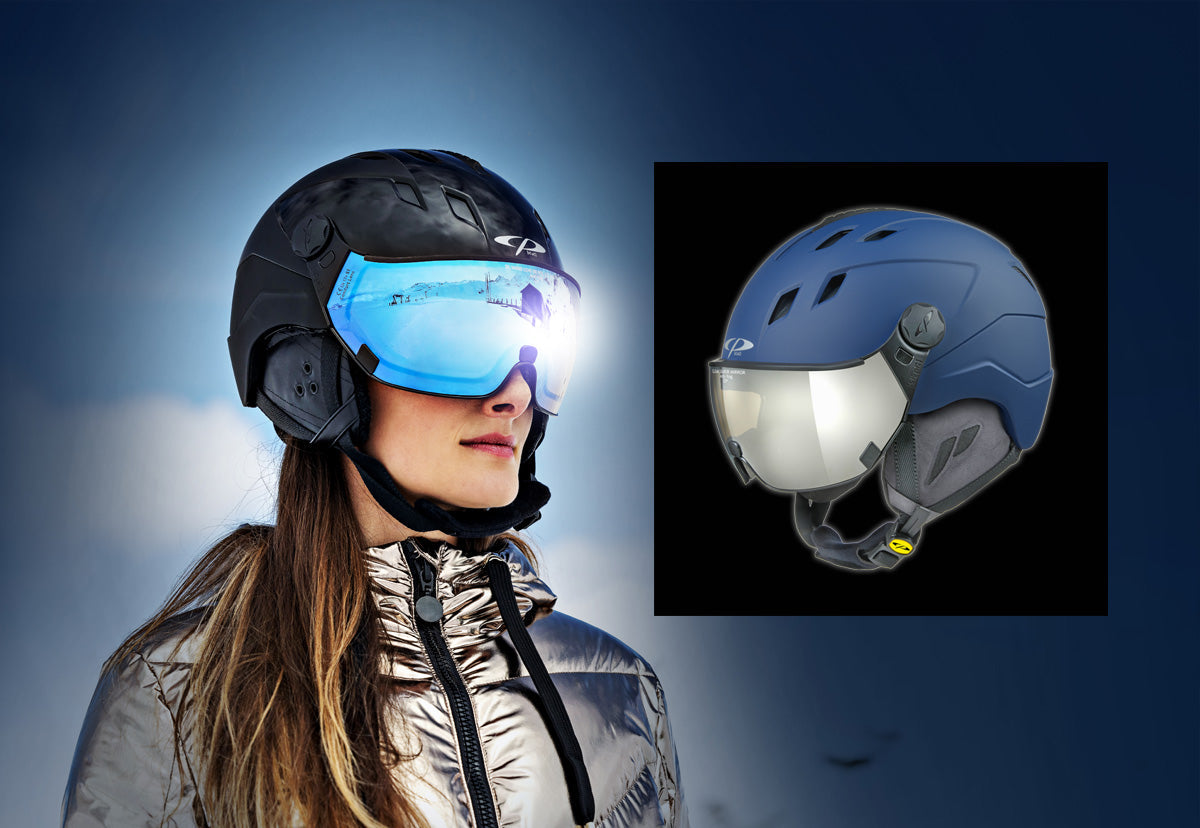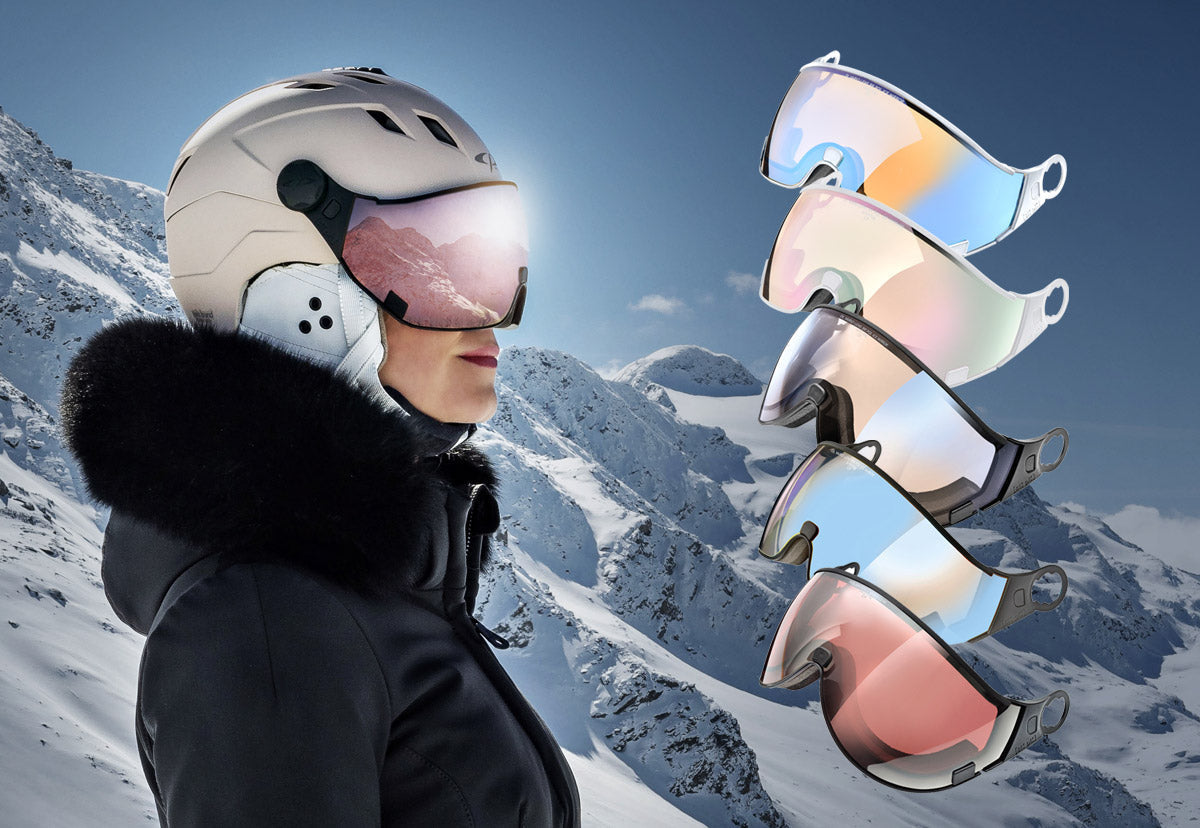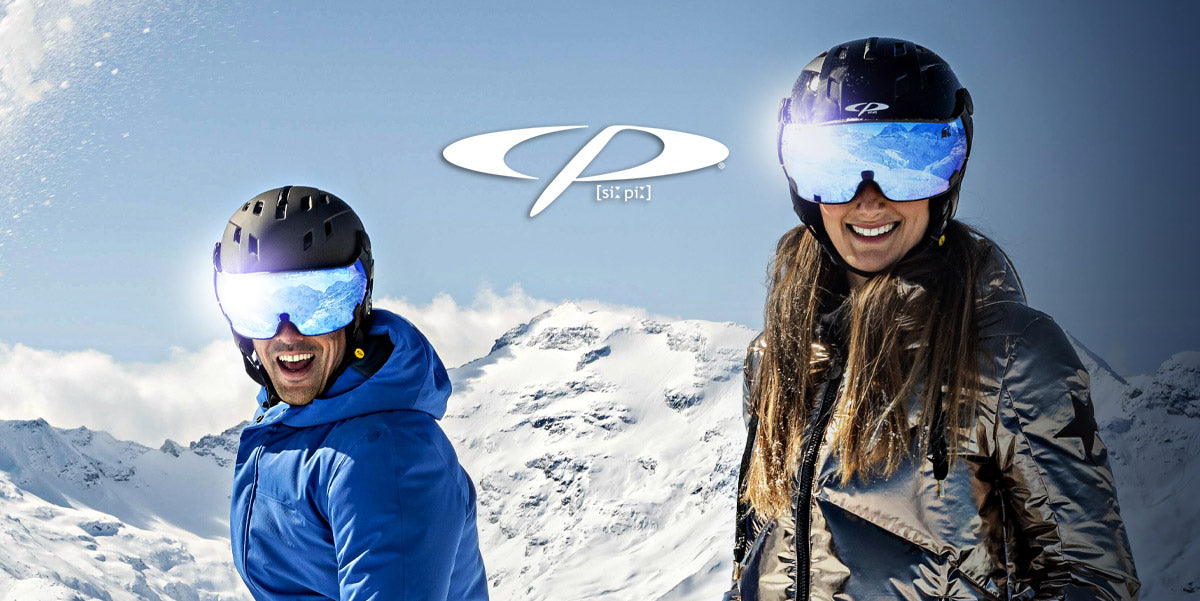
Why a Visor Ski Helmet Beats Helmet + Goggles — and Why It Matters
Skiing is as much about clarity, comfort, and confidence as it is about edge grip and stamina. For serious skiers — and even enthusiastic weekend shredders — the combination of a helmet and separate goggles has long been the standard. But in the past decade, visor (or “goggle-integrated”) ski helmets have surged in popularity. And for good reason. Below are the key advantages that make a visor helmet superior in many real-world scenarios.

1. Seamless Vision & Optics Integration
One of the biggest compromises of wearing goggles and a helmet separately is the gap, misalignment, and optical distortion that can occur where the two meet. Flare, light leaks, and peripheral distortion can all sneak in.
With a visor helmet, the visor is built into the helmet with a precision seal. The lens is aligned to your line of sight and follows the curvature and mounting exactly, reducing mirror edges, distortions, and misalignment. The integrated lens also often includes anti-fog coatings, UV protection, and optimized ventilation channels, so what you see is sharper, clearer, and more consistent — whether you glance sideways or drive straight down the fall line.
Because visor systems are engineered together, you’re less likely to get light leakage or internal reflections that plague some goggle/helmet combinations.
2. Reduced Interference, Better Seal, and More Comfort
When you wear a goggle strap over or under a helmet, it can interfere with your helmet fit, ventilation, or shape. You may need to adjust spacing or padding to avoid pressure points, and that’s especially true in cold or changing conditions when goggles fog or shift.
Visor helmets eliminate much of that compromise. The lens is mounted in a cradle or frame built into the helmet’s shell, so no strap interference. The seal around your face is more uniform and continuous, which helps keep out wind, snow, or light leakage. You also don’t have the pressure of strap tension or shifting foams to worry about mid-run.
For longer days, this translates to more consistent comfort, less micro-adjustment, and fewer distractions.
3. Faster Transitions & Simplicity
Want to hit first chair, or race between terrain changes, or simply switch between a low-light lens and darker lens mid-day? A visor helmet often lets you swap lenses on the fly (or carry spares) more easily than juggling a separate goggle and helmet.
No strap swapping, no fiddling with foam adjustments, no awkward re-mounting. For photographers, guides, racers, or anyone who values quick transitions — especially in changeable light — that simplicity is gold.
4. Fewer Cold Spots, Fogging, and Better Vent Management
One common gripe with goggles is how they fog or freeze when your face and goggles operate on different ventilation regimes. Helmet vents may push in warmer air upward, while goggle vents draw cold air — conflicts that lead to condensation or icy exhalation.
In a visor helmet, the airflow systems are designed together. The helmet’s venting, visor ventilation (if openable or ventilated), and internal channels work in harmony. This integrated ventilation reduces fogging and minimizes cold spots or drafts around the lens-helmet interface.
5. Weight Distribution & Aerodynamics
Separating goggle weight and strap tension from the helmet can shift how your head feels balance-wise, especially at speed. With a visor helmet, the weight of the lens and its support frame becomes part of the helmet’s center of gravity design. That means smoother balance and less torque or tug on your head at high speed or in aggressive carving.
Some visor helmets are engineered for better aerodynamics overall, reducing drag and turbulence around the helmet/goggle boundary. That’s an advantage in faster runs or on race courses.
6. Reduced Complexity & Gear Overlap
Every separate component is one more point of failure, more to maintain, more to misplace. With goggles + helmet, you’ve got lens swaps, strap tension, swapping out goggle upgrades, etc. Visor helmets consolidate much of that complexity.
If you prefer a streamlined setup, or you want “one helmet, multiple lens options,” a visor helmet gives you that modular simplicity without compromising performance. In effect, you get a helmet, a high-quality lens, and a configured system all in one.
7. Brand Innovation & Competitive Differentiators (CP, Kask, Atomic, Stefan Kaelin)
At Stefan Kaelin, we curate the best in visor helmet technology — CP Sports, Kask, Atomic — because we believe in this next wave of helmet integration. Each of these brands offers compelling innovations:
- CP Sports leverages its Omni-Directional Shock Absorption (ODSA) system and lens solutions that match its helmet geometry.
- KASK brings Italian design sensitivity, ventilation, adjustability, and unique optics.
- Atomic integrates the AMID safety system, a 360° fit system, and HD photochromic lenses designed to seal cleanly into the shell.
By aligning your gear with these advanced systems, you get the full benefits of integrated vision, safety, and comfort — without the compromises of retrofitting goggles into a helmet shell.
When a Helmet + Goggle Setup Still Makes Sense
Visor helmets are not magical in all environments. There are some niche or extreme use cases where separate goggles + helmet might still be preferable:
- Deep backcountry / avalanche travel — Some skiers want interchangeable lens access for powder hoods, face masks, or frames that extend over goggles.
- Extreme light variation — If you switch between ultra-dark lenses and nearly clear ones, some goggle systems still offer a wider absolute lens portfolio (though visor helmets are catching up).
- Budget or modular upgrades — If you already own excellent goggles and want to retain flexibility, a helmet + goggle combo might cost less initially.
That said, for most alpine skiing, resort days, even freeride or race settings, the visor helmet offers advantages in clarity, simplicity, comfort, and transition speed that are compelling.
Bottom Line: Clarity, Comfort, Confidence
At the end of the day, a visor ski helmet does more than just combine two pieces of gear. It unifies them: the optics, the airflow, the fit, the transitions, and the protection into a cohesive system. That means fewer distractions, cleaner vision, and more time focusing on your line — not your gear.
If your skiing demands rapid transitions, optical precision, seamless comfort, and fewer mechanical compromises, visor helmets have earned their place at the top. At Stefan Kaelin, we're proud to offer the leading options in CP, Kask, and Atomic — so you can ride, see, and perform at your best.



